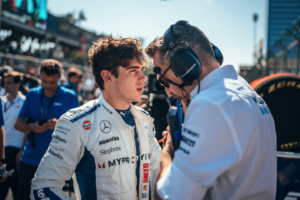The 17th race of the 2018 Formula 1 season will take place at the historic Suzuka race track in Japan this weekend. The Japanese Grand Prix (Nihon-guranpuri) is one of the most anticipated races in the F1 calendar. This is the 34th running of the Japanese GP, with all but four races hosted at Suzuka (the races in 1976,1977,2007,2008 were held at Fuji).
Japanese GP – History, Stats, Circuit Guide
The History
The original Suzuka track built in the 1960s was a 5.8-kilometers long circuit owned by the Japanese automaker Honda. The first official Japanese GP was however held at the Toyota-owned Fuji track in 1976. This was the first race held at an Asian venue, before China and the East Asian Tigers joined the F1 calendar. The first Japanese GP marked the rise of Japan as a top economic power after World War II. Iconic Japanese automakers like Honda, Toyota and Nissan had become world leaders in the automotive industry.
The inaugural race in 1976 was won by the American Mario Andretti for Lotus. The Japanese GP distinguishes itself with a classic track described by most drivers as the ‘most challenging track’ in F1. The passion, knowledge and unparalleled support of the Japanese fans creates the atmosphere that makes this a truly unique race.
After 1977, the Japanese GP was not held again until 1987, when it returned as the penultimate race of the season. That first race in 1987 at Suzuka was won by Gerhard Berger for Ferrari. An unfortunate accident in the rain in 2014 led to the death of the very popular Manor F1 driver Jules Bianchi. That is still a painful memory for all F1 fans.
The Teams and Drivers
The McLaren team sits atop the leaderboard with 9 wins at the Japanese GP (with one win at Fuji in 1977). Arch-rivals Ferrari has 7 wins at Suzuka. Eight of the last nine races have been won by Red Bull Racing (4 wins) and Mercedes (4 wins from 2014). Mercedes has won all four races in the hybrid-engine era.
Michael Schumacher has the most wins at the Japanese GP with six victories, all but one in Ferrari colors (1995 win was for Benetton). Sebastian Vettel (2009, 2010, 2012, 2013) and Lewis Hamilton (2007, 2014, 2015, 2017) are the next most successful drivers with four victories at Suzuka. Among the other current drivers, Fernando Alonso (2006, 2008) and Kimi Raikkonen (2005) have won the Japanese GP.
The Japanese GP was one of the last races on the F1 calendar in its early years and became a venue for many historic races. The drivers’ title has been clinched at the Japanese GP 12 times, more than any other race on the F1 calendar. At the first race of the Japanese GP in 1976, a titanic battle all season-long between Niki Lauda and James Hunt ended, with Hunt finishing third and clinching the drivers’ championship by one point. This rain-soaked dramatic race and the whole season has been immortalized in the Hollywood movie “Rush”.
In 1988, Ayrton Senna driving for the McLaren-Honda team won the Japanese GP at Suzuka. This led to his first drivers’ championship and the start of his dramatic rivalry with teammate Alain Prost. The next two seasons saw tough battles for the title between the two teammates culminate at the Suzuka track with race-ending collisions and disqualification. The World Championship was won by Prost in 1989 and by Senna in 1990. The intense and bitter rivalry between the two drivers with the controversial races in Suzuka will forever be etched in the memories of F1 fans.
The Circuit
The 5.807 km Suzuka circuit with 18 corners (10 right-hand and 8 left-hand corners) with the high-speed ‘figure 8’ is one of the fastest tracks on the F1 calendar with an average speed of over 235 km/h. The track is very challenging with high-speed corners, sweeping curves, and straights punctuated by slow speed corners. Suzuka demands a high downforce setup. The cars are on full throttle 70% of the time and the fuel consumption is high. The brake-wear is low, with heavy loads placed on the engines.
Sectors, Corners, and DRS Zones
Sector1 (Turn 1 to Turn 7) is a high-speed sector starting with a sweeping right-hand corner (Turn 1) followed by another slower right-hand corner (Turn 2). This leads to the rapid “Esses” (Turn 3 to Turn 6) demanding quick directional changes. The drivers need to get these curves absolutely correct with quick gear changes and high loads are placed on the engine. The long sweeping left-hand Dunlop curve (Turn 7) ends the quick first sector.
Sector2 (Turn 8 to Turn 14) starts with the right-hand Degner Curves (Turn 8 and 9) leading to a short straight under the bridge. This is followed by a sharp hairpin (Turn 11), followed by a sweeping right-hand curve (Turn 12), leading to the Spoon curve (Turns 13 and 14). This leads to a long straight to end this second sector.
Sector3 (Turn 15 to Turn 18) starts with the iconic 130R (Turn 15). This is a flat-out high-speed left-hand corner which has been altered due to safety concerns after major crashes in the early 2000s. This leads to the slow right-left chicane at the Casio triangle (Turns 16 and 17). The final right-hand corner (Turn 18) leads to the start-finish straight.
There is only one DRS zone this year at this circuit with many overtaking opportunities. The first DRS detection point comes before Turn 16, with the first DRS activation point after Turn 18.
Tyre Strategies
Pirelli tyre choices are the white-striped medium tyres, yellow-striped soft tyres, and the red-striped supersoft tyres. The supersoft tyre is the tyre of choice of the drivers with seven or more sets. The Ferrari drivers lead the way with ten sets of the softest compound tyre of the allocated 13 sets for each driver.
A two pitstop race has been the norm at Suzuka. But in 2017 the one-stop strategy worked. The rain is never far away at this venue, with rain predicted on Friday and Saturday because of a typhoon set to hit the country. Overcast skies and a chance of rain could cause mixed weather conditions during the race, though it is predicted to be dry.

Current Form
Mercedes (495 pts) has extended the lead in the constructors’ championship by 53-points over arch-rival Ferrari (442 pts). Red Bull Racing (292 pts) is in a strong third position.
Renault (91 pts) leads the midfield teams in fourth position. Haas F1 (80 pts) is in fifth position. McLaren (58 pts) and Racing Points Force India (35 pts) are now in sixth and seventh positions respectively.
Mercedes has steadily edged ahead of Ferrari since the Italian GP. Small tweaks seem to have helped Mercedes put its nose in front of the Italian team in recent races.
The midfield battle is as tight as ever as Renault leads the pack, but is under pressure from Haas F1 and a fast-improving Force India team. Renault is fighting to keep fourth place as their form has tailed off in the second-half of the season. For Toro Rosso-Honda it is their home Grand Prix and there is much expectation to see an improved performance.
Drivers’ Championship
Hamilton (306 pts) leads the title race by 50 points from Vettel (256 pts). Valtteri Bottas (189 pts) is in third position with a slender lead. Kimi Raikkonen (186 pts) is in fourth position now. Max Verstappen (158 pts) is now fifth and rounds out the top 5 positions in the drivers’ championship.
The reigning world champion Hamilton has been in superb form winning five of the last six races. Hamilton is the defending champion at the Japanese GP. Mercedes has won the last four races held here.
For Vettel it is a must-win to halt Hamilton’s momentum and to cut into his 50-point lead. With just five races to go, for Vettel and Ferrari, a quick turnaround in form is required to keep their title hopes alive.
MAIN PHOTO:
Embed from Getty Images






